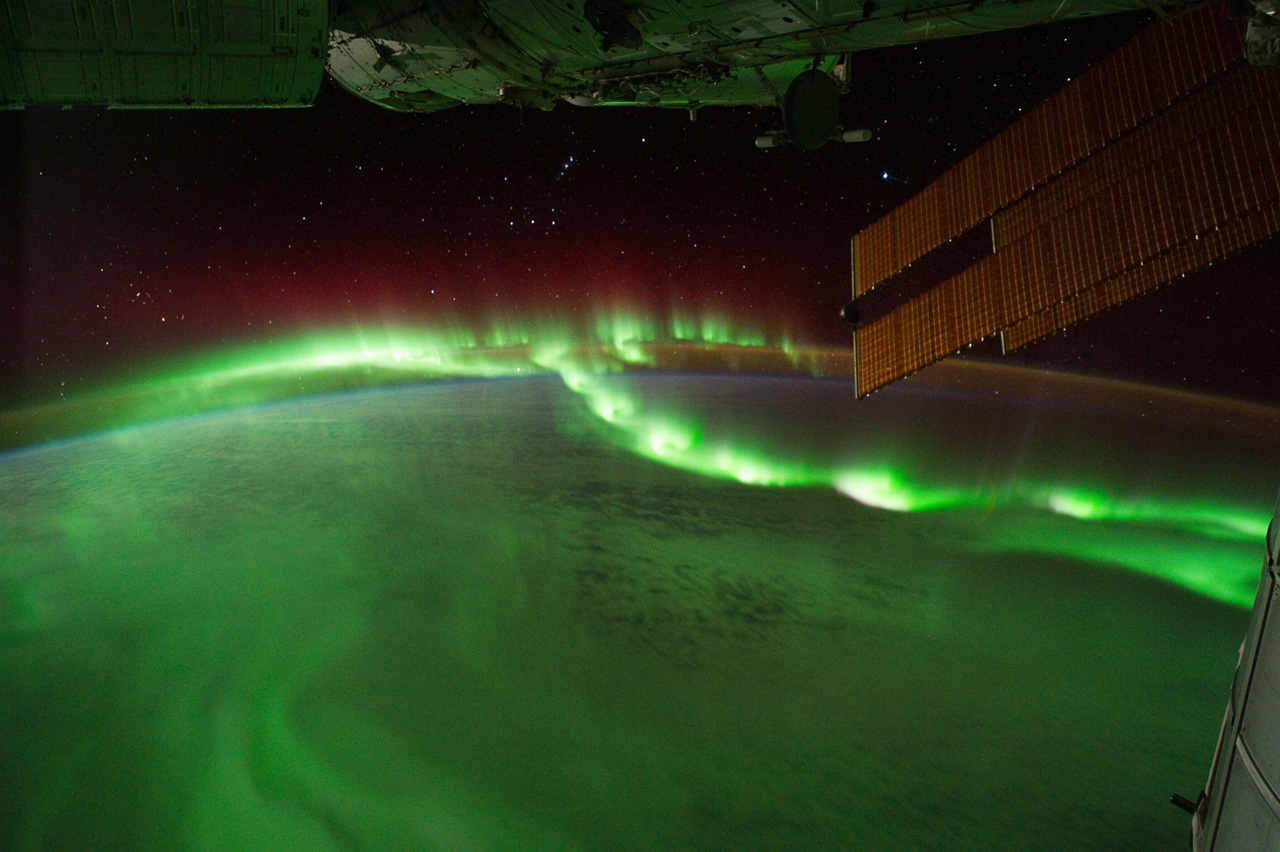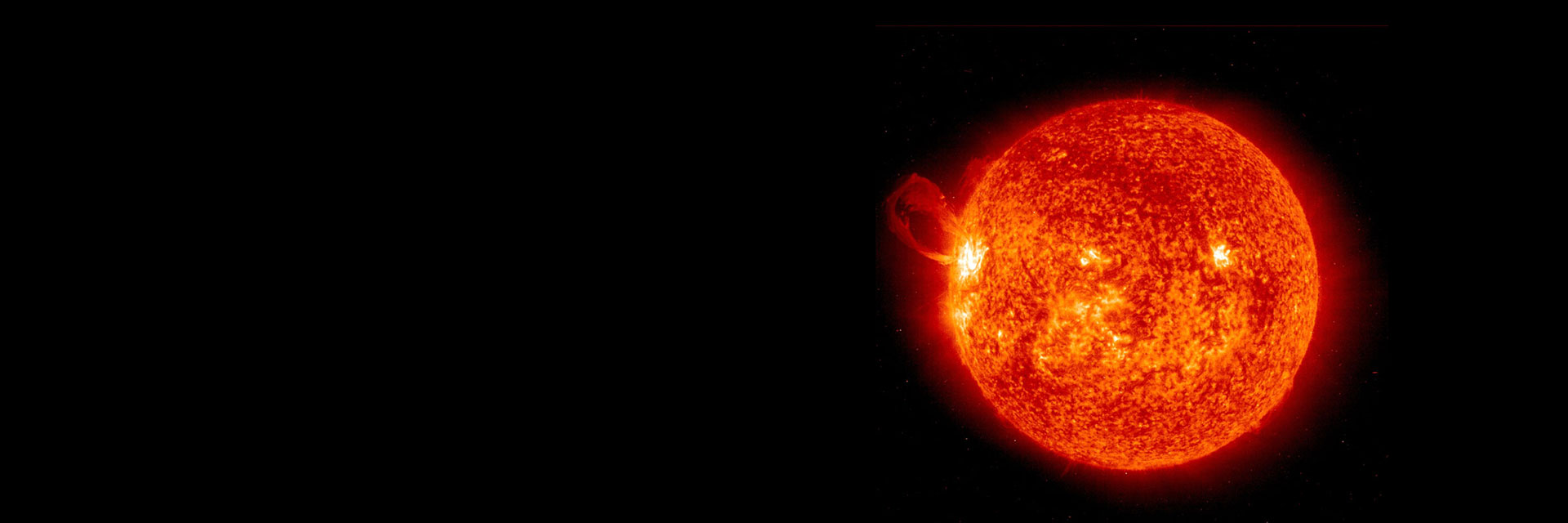Expanded from question one of the big three heliophysicist investigative questions: What are the impacts of the sun on humanity? Learn more ›
The Sun’s constant outflow of solar wind fills space with a thin wash of particles, fields and plasma. This solar wind, along with other solar events like giant explosions called coronal mass ejections, influences the very nature of space and can interact with the magnetic systems of Earth and other worlds. Such effects also change the radiation environment through which our spacecraft travel. Close to Earth, such space weather can interfere with satellite electronics, communications and GPS signals, and even – when extreme – utility grids on Earth.

Best Practice! Using Guiding Questions to Drive Inquiry
Each big idea has student-friendly questions written at different levels that you can use to guide inquiry-based investigations at the appropriate level. Explore this big idea at each level below, with featured resources you can engage learners with.
Introductory Learner
Guiding Question: How does the Earth keep us safe from the harmful effects of the Sun (including radiation and space weather)?
Standards: PS2, ESS2
Heliophysics Narrative:
- Earth's systems work together to make Earth the optimal place for life. Both Earth's atmosphere and magnetosphere protect Earth from harmful effects of the Sun. Earth's atmosphere shields it from harmful, ultraviolet (UV) radiation and keeps the planet insulated. Earth's magnetic field, called the magnetosphere, is an important part of Earth's systems and shields the planet from solar wind (space weather), which can interfere with Earth's technology and vital communication systems.
- At this level students begin to explore non-contact forces in grade 3 (3-PS2-3,4) and start to build a more complex view of how Earth's systems interact with one another in grade 5 (5-ESS2-1).
- Connect to the Sun by introducing Earth's magnetosphere into students' understanding of Earth's systems. As students experiment with magnets and observe the properties of a magnetic field, have them imagine the Earth as a giant magnet with its own giant magnetic field. Similar to how the ‘like’ poles of a magnet repel, have students imagine that the Earth's magnetic field is repelling the solar wind (which is also magnetized).
- Extend student exploration by introducing the aurora. When the magnetosphere interacts with the solar wind, some of the solar wind particles can enter Earth’s atmosphere at Earth’s poles. The solar wind interacts with Earth's atmosphere, causing the particles in the Earth’s atmosphere to get excited and glow.
- Support younger students by making a connection between the weather on Earth and space weather. Scientists predict space weather much like they predict Earth weather. Students begin observing weather patterns as early as grade K.
- Challenge students at the next level by exploring more about how space weather impacts technology, for example, causing satellites to malfunction and problems with the electrical power grid.
Featured Resource: UAF Space Outreach Page ›
Intermediate Learner
Guiding Question: How does space weather impact my daily life?
Standards: PS1, PS2, ESS2
Heliophysics Narrative:
- Space weather includes solar flares, which can damage satellites and cause some of them to even fail. Space weather can also cause changes in Earth’s magnetic field, which affects our electrical power grid.
- At this level students deepen their understanding of how matter behaves at the particle level (MS-PS1-4) and begin to explore the relationship between magnetic and electric fields (MS-PS2-5). Students learn more about predicting weather patterns and learn more about the interactions of the atmosphere with other Earth systems (MS-ESS2-1,6).
- Connect to the Sun by emphasizing that the Sun is made of plasma, the fourth state of matter, which is ionized, giving plasma its electromagnetic properties. The churning plasma on the Sun creates complex magnetic fields that have tremendous amounts of energy. It is the interactions of the magnetic fields of the Sun that cause the solar wind. The ionosphere is the layer of the atmosphere where Earth weather meets space weather! It is where satellites are located and where radio signals travel, which is why big solar storms, like a CME or a solar flare, can interfere with communications and GPS signals. The International Space Station (ISS) is also located in the ionosphere, and space weather can pose a risk to astronauts. Space weather will be a particularly important area of study in preparation for future manned missions to the Moon and beyond.
- Extend student exploration by having students investigate what causes the different colors of the aurora. When oxygen in the atmosphere gets excited by collisions with the particles of the incoming solar wind, they emit light at specific wavelengths, the most common producing a green or red color. Nitrogen emits reds, blues, and purples.
- Support beginner students by reviewing the interactions between Earth's systems, specifically the Earth’s upper atmosphere (ozone, ionosphere, etc.) (5-ESS2-1).
- Challenge students at the next level by having them investigate how scientists predict space weather.
Featured Resource: NASA ScienceCasts: Earth's Magnetosphere ›
Advanced Learner
Guiding Question: How do scientists predict space weather?
Standards: PS2, ESS2
Heliophysics Narrative:
- Scientists use a variety of methods to predict space weather. There are both ground-based observatories and satellites in Earth's orbit (and in orbit around the Sun) that take measurements that can help to predict space weather. Scientists predict space weather by monitoring the solar cycle (approximately 11 years), which can be observed by counting the number of sunspots, measuring changes in Earth's magnetic field, and by studying the Sun's atmosphere, the corona.
- At this level students have a deeper understanding of electromagnetism (HS-PS2-4,5), can quantify field interactions with Coulomb's Law (HS-PS2-4), and explain how Earth is able to generate a magnetic field, due to a rotating liquid outer core of Earth (HS-ESS2-3).
- Connect to the Sun by focusing on the magnetic interactions on the Sun, including magnetic reconnection, and how the Sun's magnetic fields interact with Earth's magnetic field. Scientists use the Kp-Index to quantify the level of disturbance in Earth's magnetic field in order to predict space weather. Have students compare their analysis of sunspot data to their analysis of data from Earth-based magnetometers.
- Extend student exploration by having students explore the Van Allen Radiation Belts, which are essentially particles from the solar wind caught in the Earth's magnetosphere.
- Support beginner students by reviewing the basics of magnetic field interactions (MS-PS2-5).
- Challenge students at the next level to investigate how technologies are impacted. For example, changes in Earth magnetic fields cause electrical currents to flow in the Earth’s crust. Sometimes these currents can find their way into transformers, causing the transformers to overheat and fail, resulting in electrical blackouts.
Featured Resource: AAPT K-12 Teacher Portal Space Weather Resources ›
What level are my learners?
Introductory: A younger learner (K-5), or a learner new to the subject matter.
Intermediate: A middle-aged learner (6-8), or a learner that has some familiarity with the subject matter.
Advanced: An older learner (9-12+), or a learner that has a lot of experience with the subject matter.
Note: Next Generation Science Standards (K-12) are mapped to the resources accordingly.
What is a NGSS Heliophysics Narrative?
NGSS Heliophysics Narratives support educators with the incorporation of heliophysics concepts and resources into their existing curricula. The narratives consist of relevant heliophysics background information, applicable NGSS performance expectations, and guiding questions to spark inquiry-based learning at the appropriate level.
Narrative Structure:
- Short answer to the question, for teacher background knowledge
- An analysis of NGSS Performance Expectations (PE) to determine learning constraints at each level
- Heliophysics topics that connect to the NGSS PE and can be infused into teaching systems science
- More heliophysics to explore
- How to support beginner learners
- How to challenge learners at the next level





